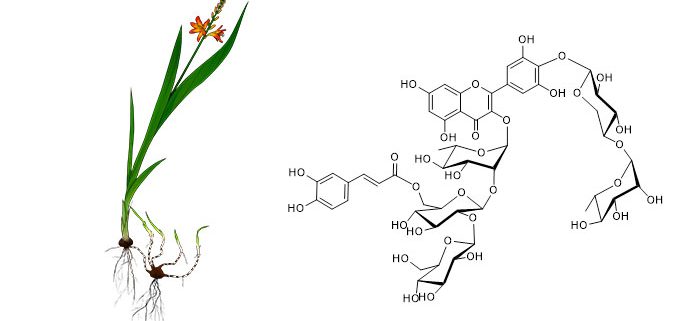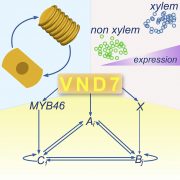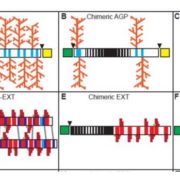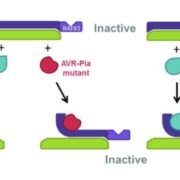Biosynthesis of the Antidiabetic Plant Metabolite Montbretin A
Irmisch et al. investigate enzymes of the ornamental plant montbretia involved in a complex flavonoid biosynthetic system relevant to human health. https://doi.org/10.1105/tpc.18.00406
Background: Type-2 diabetes is a major health challenge of the 21st century requiring new treatments. Plants produce a vast array of natural products that are widely used in traditional and modern medicine. In the common garden plant montbretia (Crocosmia x crocosmiiflora), a complex molecule was discovered that inhibits a critical step of starch metabolism in the human gut. This molecule, called montbretin A (MbA), is produced from a number of different building blocks that are uniquely assembled by a set of enzymes in the belowground parts of montbretia plants. However, the plant only produces very small amounts of the compound, which may limit its application as a pharmaceutical. To enable the enhanced production of MbA, it was essential to learn how the molecule is naturally biosynthesized in the montbretia plant.
Question: How does the montbretia plant produce the complex MbA molecule from a set of simple building blocks? Specifically, what are the individual steps in MbA assembly and what are the genes and the enzymes responsible? Prior to our work, the metabolic system of MbA biosynthesis was virtually unknown.
Findings: MbA is produced exclusively in the developing, belowground storage organs of the montbretia plant. The accumulation of this metabolite follows a seasonal pattern, with biosynthesis occurring predominantly during the early summer. By exploring large data sets of metabolite and gene expression profiles of the plant, we identified a set of four genes that are responsible for building the biologically active core structure of MbA, dubbed “mini-MbA.” The encoded enzymes are two UDP-dependent glycosyltransferases and two acyltransferases. Transformation and expression of these enzymes in wild tobacco lead to the production of a “surrogate mini-MbA,” providing the foundation for metabolic engineering of MbA production in tobacco.
Next steps: In future work, we will identify the remaining genes and enzymes of MbA biosynthesis. Our goal is to reconstruct the complete pathway of MbA biosynthesis in a heterologous plant or microbial systems to enable stable production of sufficient amounts of mini-MbA or MbA for drug development and application.
Sandra Irmisch, Seohyun Jo, Christopher R. Roach, Sharon Jancsik, Macaire Man Saint Yuen, Lufiani L. Madilao, Mark O’Neil-Johnson, Russel Williams, Stephen G. Withers, Joerg Bohlmann (2018). Discovery of UDP-Glycosyltransferases and BAHD-Acyltransferases Involved in the Biosynthesis of the Antidiabetic Plant Metabolite Montbretin A. Plant Cell 30: 1864-1886. https://doi.org/10.1105/tpc.18.00406










